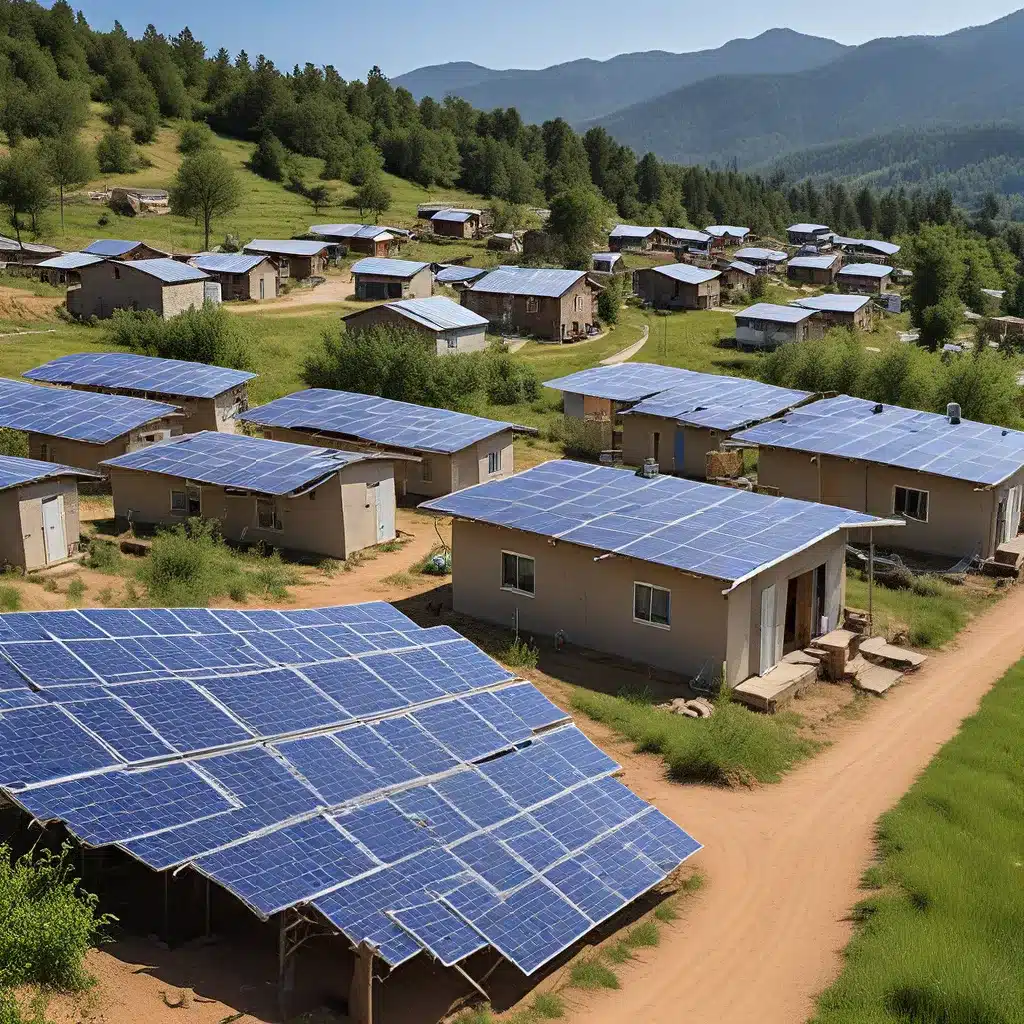
As someone who’s passionate about sustainability and the future of our planet, I’ve been fascinated by the incredible potential of renewable energy microgrids to transform the lives of communities living off the grid. These innovative systems are not only providing clean, reliable power, but they’re also unlocking new social and economic opportunities for people who’ve long been left in the dark.
Bridging the Electricity Gap
In our modern world, it’s easy to take electricity for granted. But the reality is that nearly 800 million people, mostly in sub-Saharan Africa, still lack access to the grid. These off-grid communities have traditionally relied on costly, polluting diesel or gas-powered generators to meet their energy needs. But thanks to advancements in renewable technology, that’s all starting to change.
Microgrids, also known as minigrids or remote microgrids, are self-contained electricity systems that generate, distribute, and regulate power within a localized area. Unlike the centralized national grid, these decentralized systems can operate independently, making them an ideal solution for remote, off-grid regions.
And the best part? Microgrids are increasingly powered by renewable sources like solar, wind, and biomass. This not only provides a more sustainable and eco-friendly energy solution, but it also helps to reduce energy costs for the communities they serve. In fact, a recent initiative in Africa found that electricity from their renewable microgrids can cost as little as $0.33 to $0.44 per kWh – nearly a third of what these communities currently pay for fossil fuel-powered generators.
Empowering Off-Grid Communities
But the benefits of renewable energy microgrids go far beyond just affordable electricity. These systems are transforming the social and economic landscape of the communities they serve.
Take the RePower initiative, for example. This four-year project aims to bring renewable electricity to 20,000 off-grid consumers in Africa by 2027, using plug-and-play microgrid technologies. But it’s not just about powering homes and businesses – the initiative also plans to establish training hubs to equip local communities with the skills they need to maintain and operate these systems.
“RePower will empower African off-grid communities to power their own development through the productive use of energy, moving beyond traditional electrification to drive true economic growth,” says Moses Mengu, a senior project leader at the Danish Technological Institute.
And the impact of these microgrids extends far beyond just the individuals they serve. By providing reliable, affordable electricity, they’re opening up new opportunities for community development and entrepreneurship. Suddenly, small businesses can thrive, schools can stay open after dark, and healthcare facilities can operate 24/7. It’s a transformative ripple effect that’s changing the very fabric of these communities.
The Modular Advantage
One of the key advantages of renewable energy microgrids is their modular, plug-and-play design. Unlike traditional grid infrastructure, these systems can be quickly and easily installed in remote locations, without the need for extensive construction or costly logistics.
“Our work in Madagascar, Niger, Senegal, and Ghana provides a blueprint to scale up successful use cases, developing a process for the industrialization of microgrids,” explains Corneliu Barbu, the project coordinator for RePower and an associate professor at Aarhus University. “This will cater not only to immediate energy needs but also anticipate future community development.”
The modular nature of these systems also makes them highly scalable and adaptable. As a community’s energy needs grow, additional solar panels, battery storage, and other components can be easily added to the microgrid. And because they’re not tied to a centralized grid, these systems are also more resilient to natural disasters and other disruptions.
A Sustainable Future
As I learn more about the incredible potential of renewable energy microgrids, I can’t help but feel a sense of excitement and optimism for the future. These innovative systems aren’t just powering off-grid communities – they’re empowering them to take control of their own destinies, to build thriving local economies, and to create a more sustainable world for us all.
And the best part? This is just the beginning. As renewable energy technologies continue to evolve and the costs continue to come down, I believe we’ll see an explosion of microgrid projects popping up in remote regions around the globe. It’s a future that’s not only cleaner and greener, but one that’s also more equitable and inclusive.
So, if you’re like me and you’re passionate about making a difference in the world, I encourage you to keep an eye on the exciting developments happening in the world of renewable energy microgrids. Who knows – maybe one day, you’ll be the one helping to bring light and opportunity to the darkest corners of our planet.

